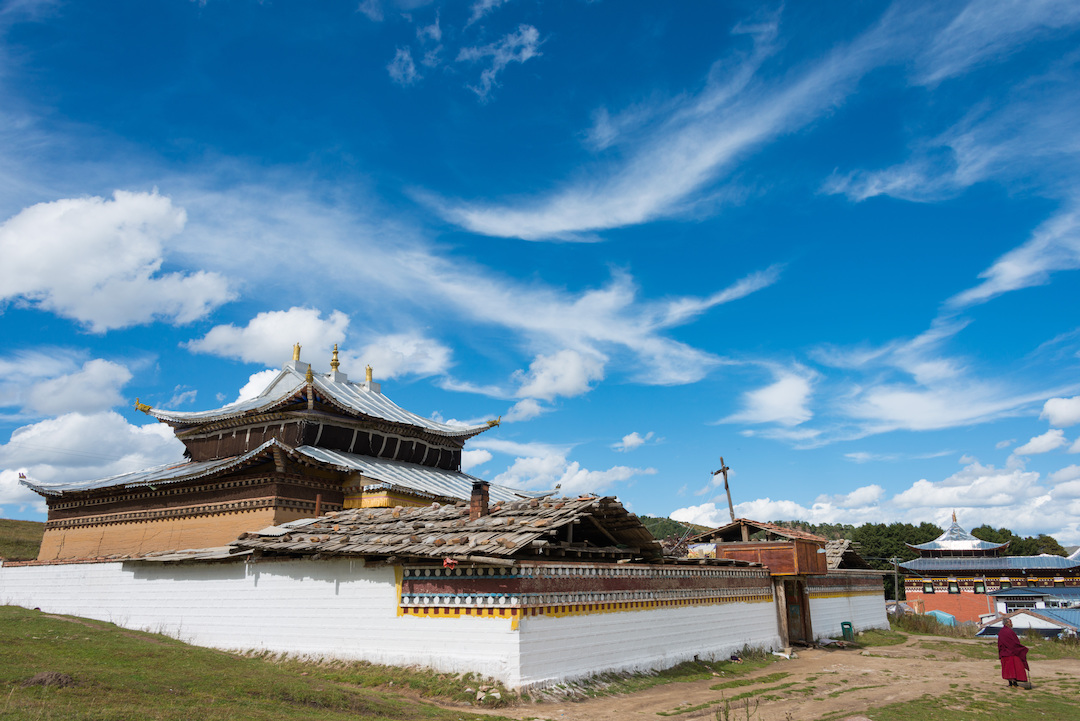Different Faiths in Langmusi
The Sichuan-Gansu border runs right through the center of Lhamo (ལྷ་མོ།) town. Here, Islamic and Buddhist faiths live peaceably together in this monastic village that hosts two Gelugpa Tibetan Buddhist monasteries as well as an Islamic Mosque. Lhamo offers visitors a look into both religions and cultures. Although each is located in a different province, Kirti Monastery (ཀིརྟི་དགོན་པ།) and Sertri Monastery (གསེར་ཁྲི་དགོན་པ།) are not far from each other. Some speculate that the reason the border splits the town is because of years of power struggles between the two Langmusi monasteries.

Behind the Name
The Tibetan Buddhist monasteries are known as the Dacang Lhamo Gerdeng Monasteries. Dacang means “Tigers’ den” and, as the story goes, there was a large tiger den near where the Monastery now sits. The word Lhamo means “fairy maiden.” In nearby caves, the shape of the stones resemble the female body. The literal translation of Dacang Lhamo, then, is “a fairy maiden in the tiger’s den.”

Langmusi Monasteries
Kirti Monastery
Both of the monasteries are well regarded and historically significant. Kirti Monastery, however, is the larger and more impressive of the two. Kirti sits on the Sichuan side of town. Seven hundred monks call Kirti home. The first of its temples was built in 1713 by a descendant of Kirti-incarnated lamas, named Tala. By 1748, three temples were built in total and the area was expanded into a much larger compound. There are many caves behind Kirti Monastery. In one of these caves, you can find the statue of the Tibetan Goddess, Palden Lhamo. The Namo Gorge, which is the source of the Bailong River, is also nearby.

Sertri Monastery
The Sertri Monastery is also called the Gansu Monastery. It is on the northern hill on the other side of the river. This monastery dates back to 1748 and is one of the few remaining locations of Tibetan Sky Burials. These ceremonies are usually private. Sertri Monastery is home to nearly 350 monks, making it the smaller of the two monasteries. Despite its smaller size and less impressive reputation, many Tibetan pilgrims begin their Kora at Sertri.


